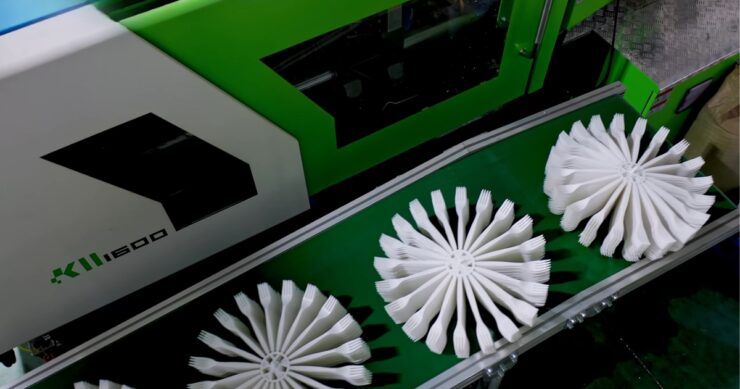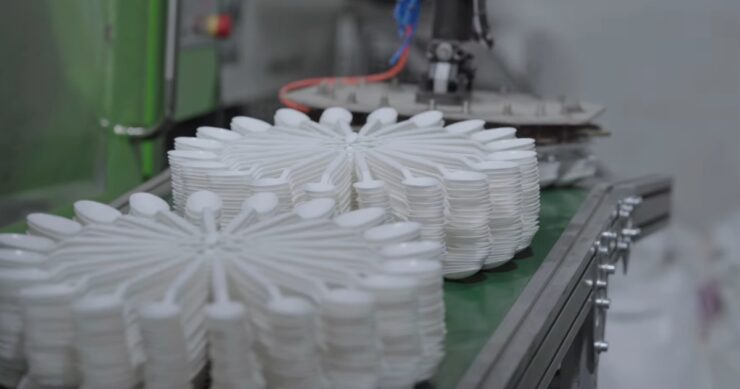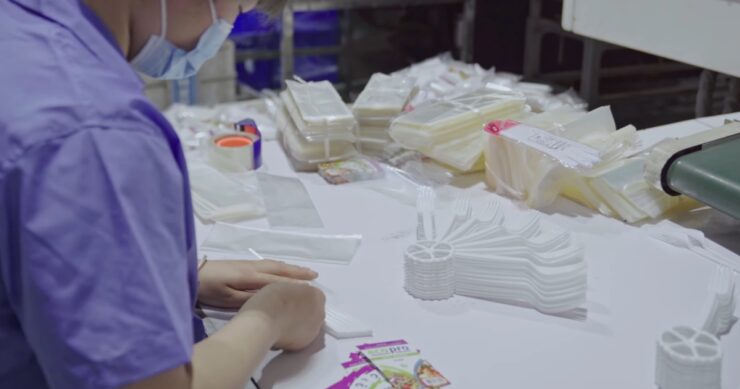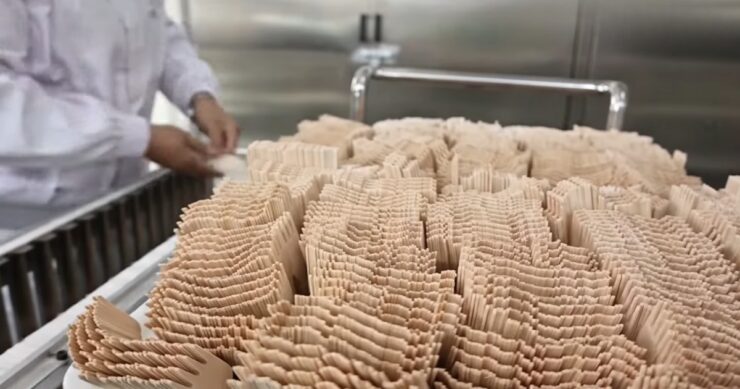Reducing the use of disposable cutlery has been brought up extensively to combat climate change. It is environmentally friendly and helps lessen the quantity of materials dumped in landfills. Additionally, it saves businesses significant money by eliminating the need to purchase disposable cutlery regularly.
However, the question is: What are the best ways of doing this? Or are there any more environmentally friendly substitutes for the widely used disposable plastic cutlery? We’ll now go over a few ways to cut back on using disposable cutlery or suggest some better options.
Replace Disposable Plastic Cutlery with Reusable Utensils

Most dining establishments have switched from disposable cutlery to reusable metal silverware. Previously, only fine dining establishments used metal utensils, but now, most fast food places also use them. The reason is that doing this is more economical than continually purchasing disposable cutlery.
It’s worth mentioning, however, that some consumers still prefer to use disposable spoons and forks for safety reasons, especially after the global pandemic. Either way, the best products in this domain can be found at dispensersolution.com.
Use Compostable Cutlery Instead
People would inevitably utilize disposable cutlery because some individuals still prefer to use them. It is because some people find it unpleasant to use forks and spoons used by strangers and need to be more knowledgeable about whether or not they have been appropriately disinfected.
Furthermore, takeout and food delivery have been widespread, particularly during the pandemic when eating in has been discouraged for others for health and safety reasons.
Moving to compostable or biodegradable cutlery is the recommended course of action as we advance. It is still disposable, but its biodegradability means it won’t take years to break down. It may be easily recycled, unlike those single-use plastic cutlery sets.
Usage of Cutlery Dispensers
And, because it is hard to eliminate throwaway cutlery, a spoon and fork dispenser is another practical approach to reduce cutlery usage. Cutlery dispensers reduce waste because they decrease unnecessary consumption by customers. Supplying the precise amount of cutlery that customers would use helps you manage your cutlery supply.
Additionally, it lessens the quantity of cutlery thrown out for hygienic concerns and contamination. Hence, the amount of disposable cutlery used is significantly decreased using cutlery dispensers.
Encourage the Use and Bringing of Their Reusable Cutlery

Some people are starting to dine using their reusable cutlery. The first benefit is that it guarantees they use sanitized and clean cutlery. Furthermore, the majority of these are environmental conservatives.
Since individuals voluntarily bring their reusable cutlery, you won’t have to go through the hassle of establishing it for them. Naturally, though, only some people are comfortable with this concept, so a bit of encouragement from the business can go a long way.
Opt for In-House Dining
Encouraging customers to dine in is an effective strategy to promote sustainability in the food service industry. When customers eat on-site, establishments have the opportunity to provide reusable cutlery, significantly reducing the need for disposable alternatives. This practice not only cuts down on waste but also enhances the dining experience.
In-house dining allows for a more controlled environment where restaurants can implement sustainable practices more effectively. It’s an opportunity for businesses to showcase their commitment to the environment and encourage customers to align with these values.
Offer Discounts for Reusable Cutlery
Incentivizing customers to bring their reusable cutlery is a proactive approach to reducing waste. Offering discounts or other incentives, like a small percentage off their bill, can motivate patrons to adopt more eco-friendly habits. This initiative not only encourages the reduction of disposable cutlery use but also engages customers in the sustainability journey.
It’s a win-win situation where customers save money while helping the environment. Such incentives can be a part of a broader loyalty program, further encouraging repeat visits and sustainable practices.
Implement a “BYOC” Policy (Bring Your Cutlery)

Adopting a “Bring Your Own Cutlery” policy is a novel way to cut down on disposable utensil usage. Similar to the trend in coffee shops encouraging customers to bring reusable cups, this policy could significantly reduce waste.
Establishments can promote this policy through creative marketing strategies and possibly reward those who participate with special offers or recognition. This policy not only reduces the reliance on single-use options but also fosters a sense of community and shared responsibility among patrons and the establishment.
Provide Education and Awareness
Educating customers about the environmental impact of disposable cutlery can lead to more conscious decision-making. Using signage, menus, or table cards to convey information about the benefits of reusable utensils can increase customer awareness.
This education can extend to the impacts of plastic pollution, the benefits of waste reduction, and the positive environmental impact of choosing reusable options. Increased awareness and understanding can inspire customers to make more environmentally friendly choices, not only in dining but in their everyday lives.
Collaborate with Food Delivery Services
Partnering with food delivery platforms to reduce the use of disposable cutlery is a crucial step in minimizing waste. Restaurants can work with these services to include options for customers to opt out of disposable cutlery when ordering online.
This collaboration can significantly reduce the number of disposable utensils distributed, as many customers eating at home have access to their reusable cutlery. It’s also an opportunity to educate a broader audience about the importance of reducing single-use plastic consumption.
Support Local Cutlery Suppliers

Sourcing reusable cutlery locally is an excellent way to support the community while promoting sustainability. By partnering with local businesses that produce eco-friendly utensils, restaurants can reduce their carbon footprint and contribute to the local economy.
This approach not only ensures a supply of sustainable cutlery but also helps to build a network of like-minded businesses committed to environmental stewardship. Supporting local suppliers can also be a point of pride and differentiation for the establishment, appealing to customers who value both community support and sustainability.
It is a challenging task that requires the cooperation of both establishments and their guests to reduce the use of disposable cutlery.
However, by continuing to employ all of the previously listed methods, we may help save the environment, assist businesses in decreasing additional costs associated with single-use cutlery, and reduce the usage of disposable cutlery.

